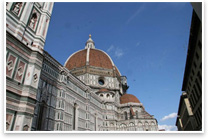 Fighting Irish Tackle Climate Change Through Design Fighting Irish Tackle Climate Change Through DesignNotre Dame embraces LEED on campus The University of Notre Dame is taking steps to address climate change. They have created a Web site devoted to sustainability issues that states: “As a Catholic academic community of higher learning, the University of Notre Dame and its faculty, staff, and students believe we have a responsibility to advocate the principles and live out the practices of energy and environmental stewardship.” As testament to their commitment, Notre Dame recently retained BSA LifeStructures to design its first LEED® certified building for its College of Engineering. With a price tag of $69.4 million, the new 161,000-square-foot Stinson-Remick Hall will be the flagship of the engineering department and provide modern facilities for undergraduate and graduate students, including a clean room and nanotechnology lab. Designed in collaboration with RFD and Maregatti Interiors, the building was designed to create spaces that foster collaboration and experiential learning and discovery.
|
||
Copyright 2008 The American Institute of Architects. All rights reserved. Home Page |
||
news headlines
practice
business
design
This is the home of the weekly Best Practices column, news of tips and tools that you can use in your day-to-day practice and case studies illustrating “how-tos” and “lessons learned” for all stages of practice. The Practice Zone also features reports of research in architecture and related fields.

 Indian Green
Indian Green ADVENTURES IN ARCHITECTURE
ADVENTURES IN ARCHITECTURE